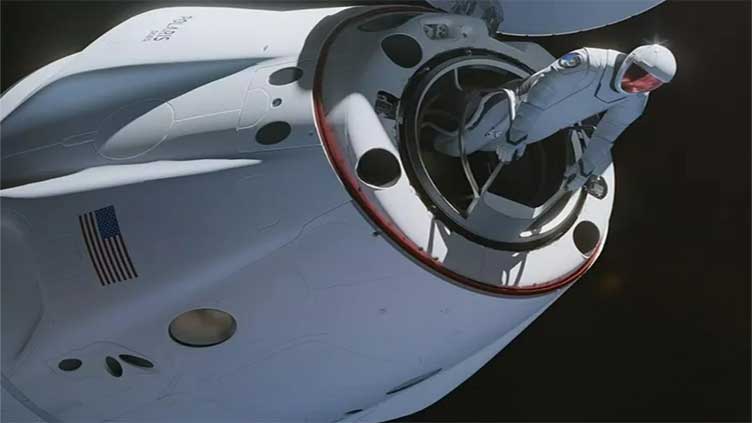SpaceX set for historic spacewalk taking astronauts farther from Earth than any mission

Technology
This will take it higher than any manned spaceflight since the Apollo 17 Moon mission in 1972
(Web Desk) - Elon Musk’s SpaceX is set for a historic spacewalk that will take astronauts further from Earth than any other mission in more than 50 years.
Dubbed “Polaris Dawn,” the climb to orbit will be launched by Florida’s Falcon 9 rocket as the crew prepares to spend up to five days in space.
SpaceX’s Dragon spacecraft has been slated as the chosen transportation method for the four-person crew, which will attempt to reach an initial orbital altitude of 870 miles.
This will take it higher than any manned spaceflight since the Apollo 17 Moon mission in 1972 and will also surpass the highest manned mission to Earth orbit established by Gemini 11 in 1966.
Dawn Polaris have already announced that the mission will not launch before Wednesday, July 31, 2024, suggesting that it could happen sooner rather than later.
This means that Mission Commander Jared Isaacman, Mission Pilot Scott Poteet, Mission Specialist Sarah Gillis, and Mission Specialist and Medical Officer Anna Menon could all be ready to take off at some point in the near future.
But the quartet will have to overcome a somewhat complicated obstacle as part of the mission.
The initial orbital altitude of 870 miles is expected to be high enough to penetrate the inner band of the Van Allen radioactive belts that surround the Earth, New Atlas report.
Naturally, this puts the crew at risk of radiation exposure, although the report adds that this is expected to be minimal due to its initial orbit being highly elliptical, with a lower altitude of 190 kilometers.
While in orbit, however, the four-man crew will work to achieve a series of goals – ‘High Altitude’, ‘First Commercial Spacewalk’, ‘Communications in Space’ and ‘Health Impact Research’.
They will begin by conducting 38 scientific experiments to study the effects of spaceflight and space radiation on human health.
When these are completed, the altitude for the remainder of the five days in orbit will be reduced to 430 miles.
They will then attempt the first private spacewalk, wearing SpaceX-designed extravehicular activity (EVA) spacesuits, upgraded from the current intravehicular suit (IVA).
The Dragon spacecraft was also specially modified to depressurize and allow the forward hatch to be opened as part of the mission.
After that, the crew will test Starlink laser-based communications in space, providing valuable data for future space communications systems needed for missions to the Moon, Mars and beyond.
Astronauts will then conclude their time in orbit conducting scientific research designed to promote human health on Earth and during future long-duration space flights.


